
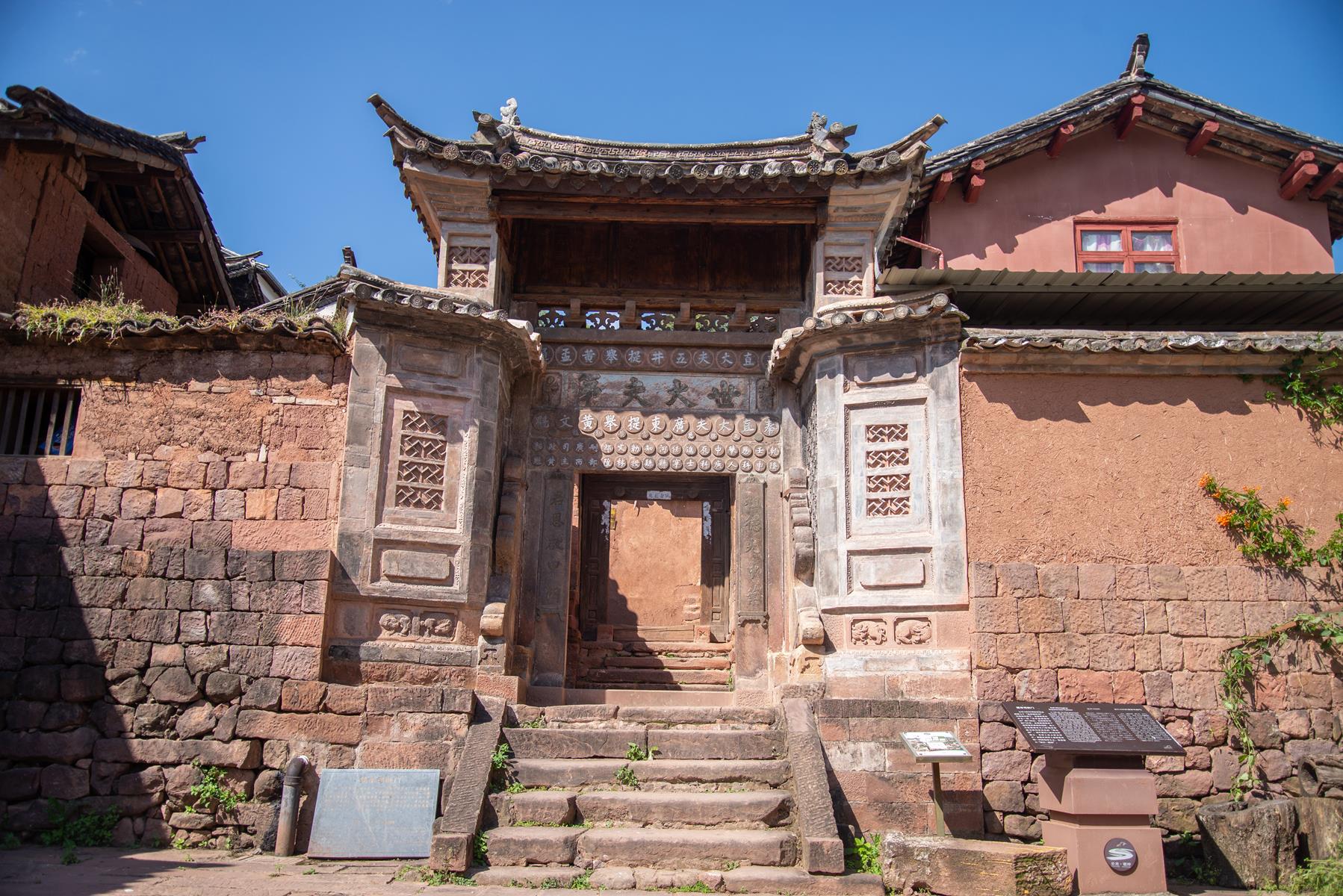
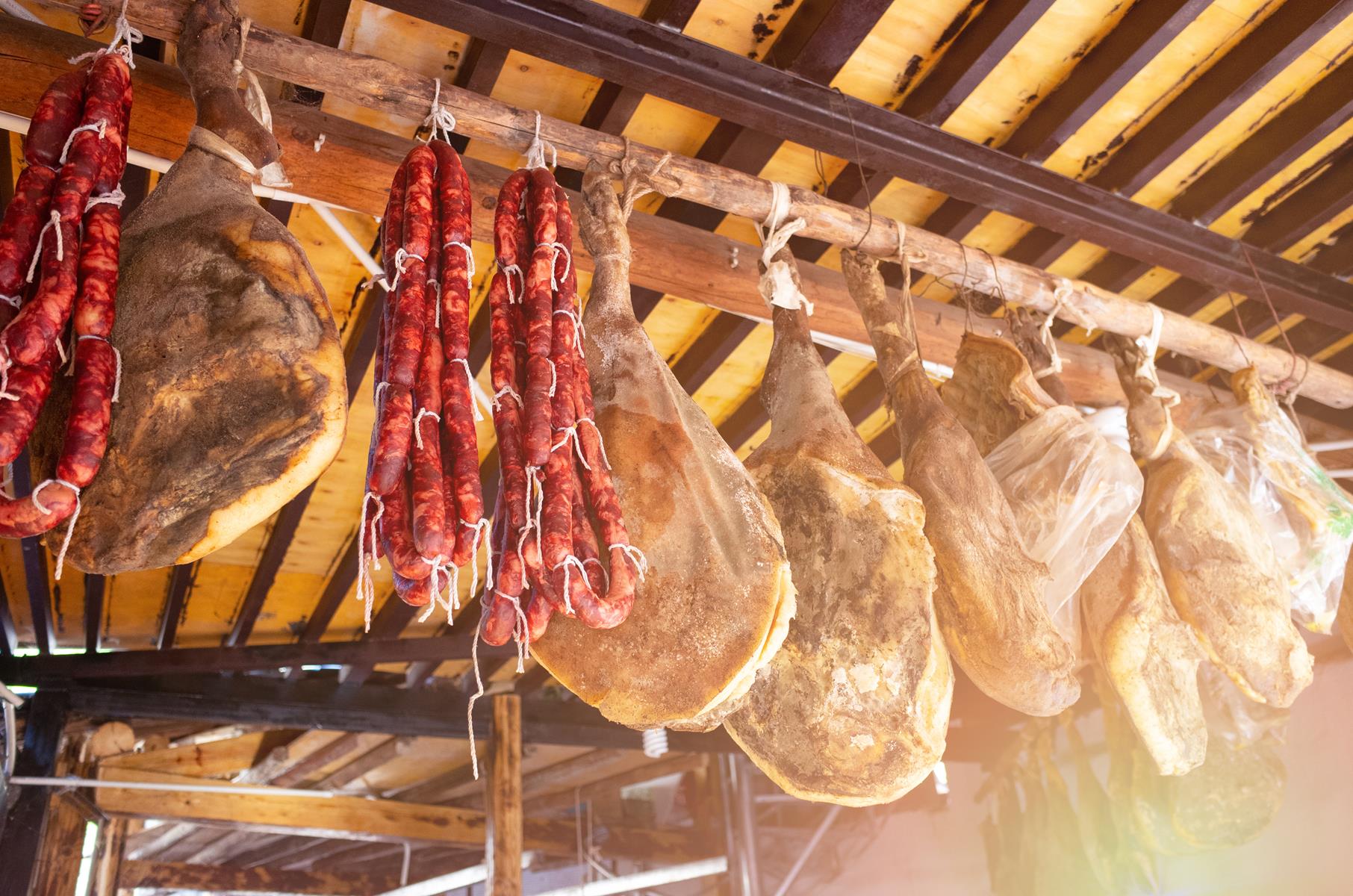
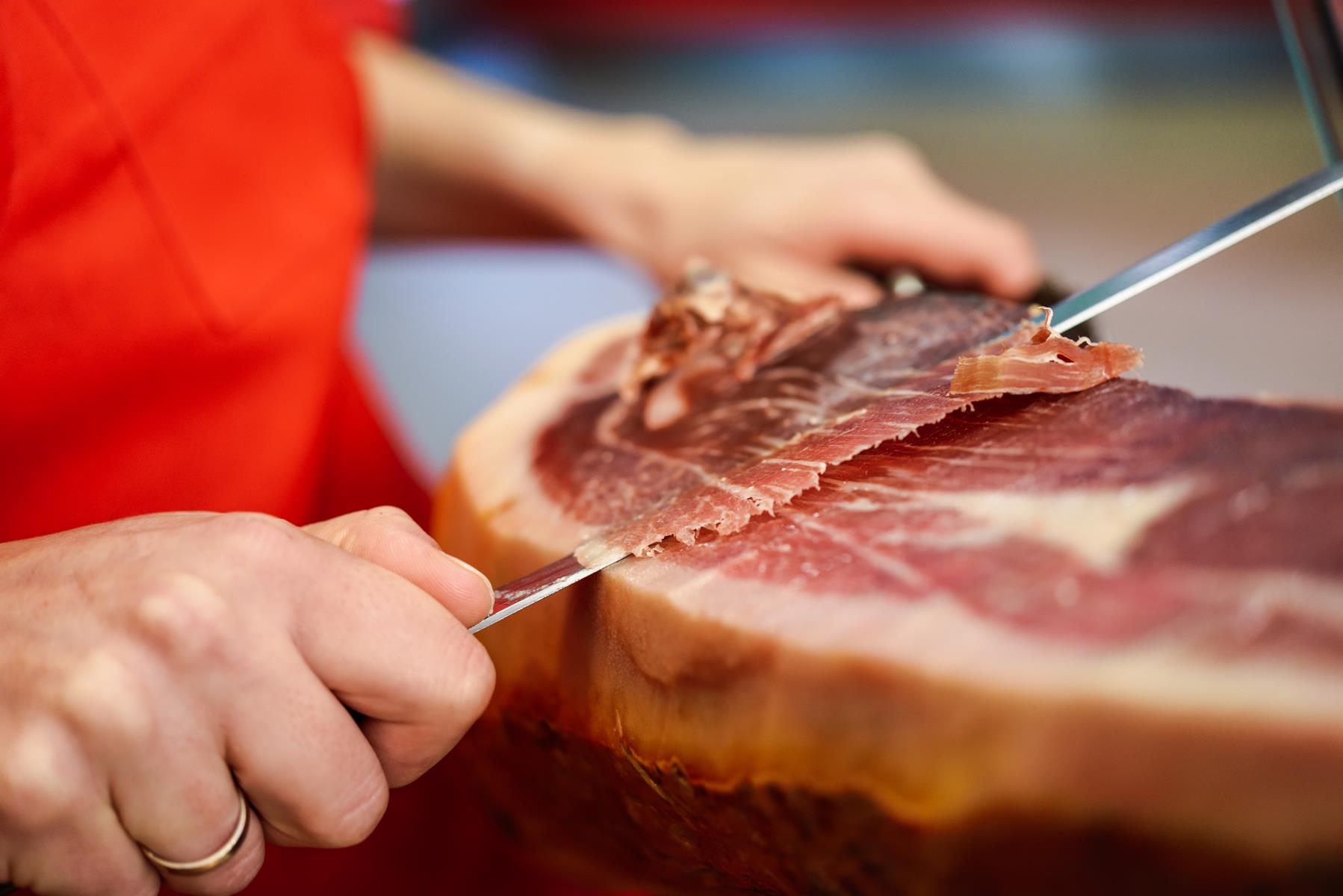
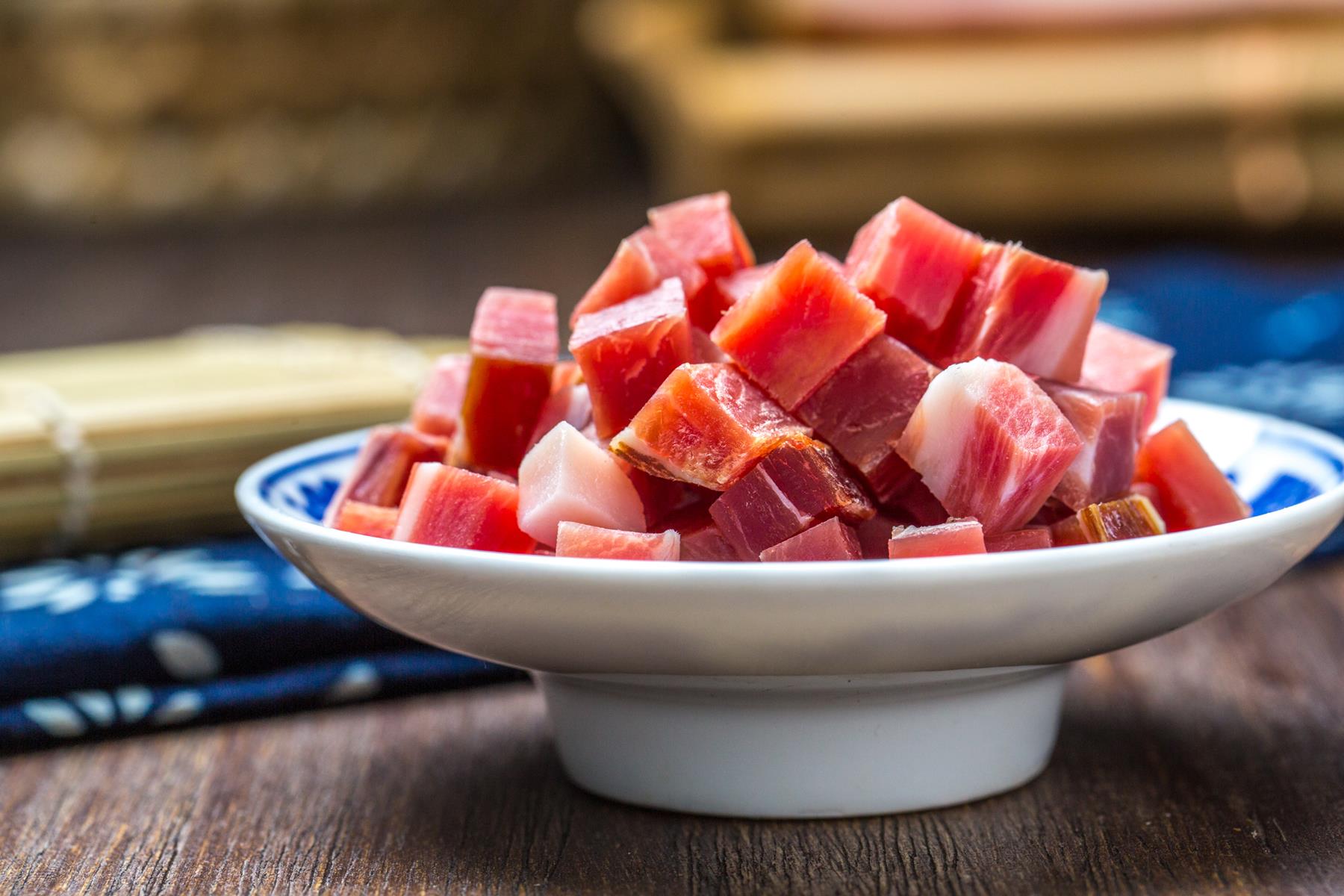
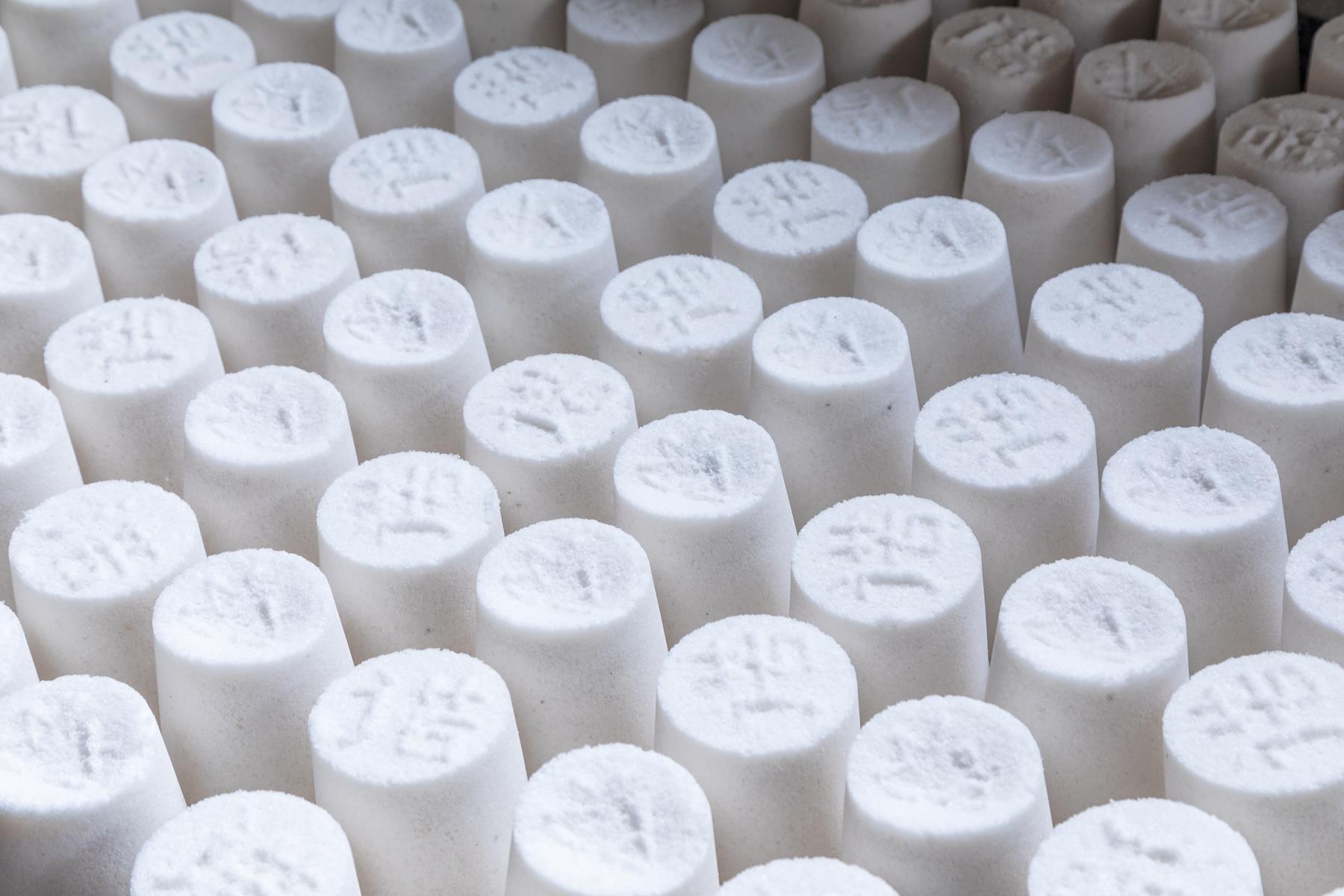
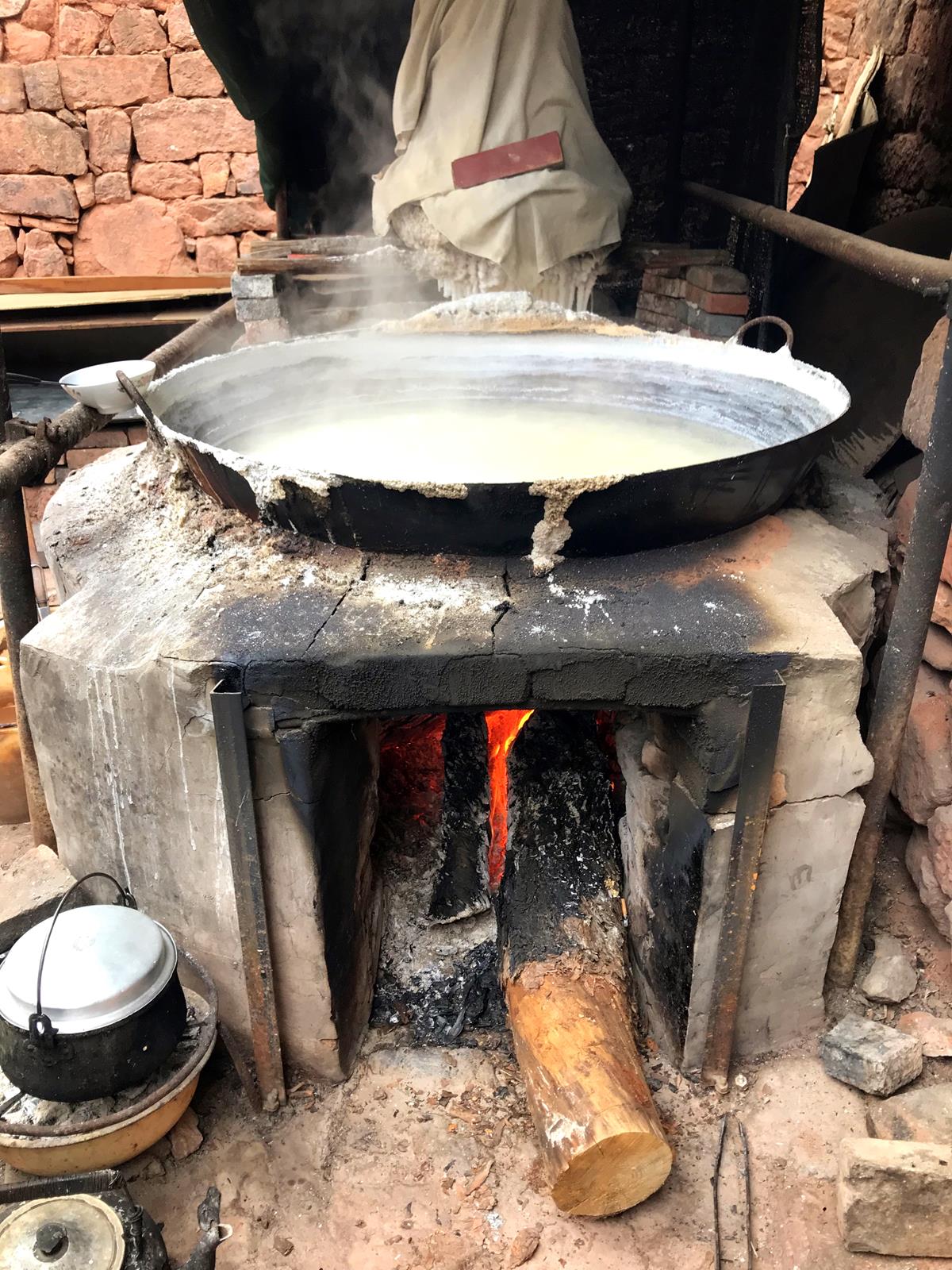
Nuodeng is a small village perched on a hillside in Yunnan, at an altitude of 2,200 metres.
The hill that Nuodeng Village rests upon had rich deposits of natural rock salt underneath – making it an important stopover on the salt route at one time.
Even though those glory days have long passed, a few salt wells remain at the entrance to the village. A reminder of times gone-by.
The natural salt wells spread through the striking red sandstone. The villagers here boiled it every winter. Water was pumped into the salt well to erode the salt deposits. As the water flowed back out, it carried dissolved salt with it.
The salted water was then boiled in a large wok to evaporate the water. After the water is removed, the recovered salt was left to dry before being molded into white cylindrical blocks.
For selling, the words "诺" and "邓" were marked on both ends of the finished salt block to mark its place of origin. As this potassium-rich salt was much purer than sea salt and not contaminated by marine minerals, it was of the highest grade.
The potassium in the salt is good for health. With a mild taste, the salt is perfect for making ham.
Here, black-haired hogs are native to the valleys of the surrounding 1,800-metre (5,900-foot) Hengduan Mountain range.
For breakfast the pigs are given salt well water mixed with vegetable paste. When out in their free-range environment, they have access to graze on wild vegetables, fruit and fungus. This is said to be the reason for the especially tender ham that is produced in Nuodeng.
With the warm and humid climate and the continuation of the traditional ham making and curing techniques, Nuodeng ham has become the most coveted.
Producers follow the guidance of nature, the tried-and-tested length of curing time, resulting in a product that is 100 percent hand-made. Patience and tradition are what make the ham of Nuodeng.
After the ham has undergone an initial curing, it is coated with a paste of cooking-fire ash and salt brine to keep it fresh, fragrant and insect-resistant.
A peek inside any given house in Nuodeng reveals hams hanging from every viable beam, where they will stay to air-dry and age for a minimum of three years.
Upon completion, Nuodeng ham is cut into thin, tender slices. Even here, tradition comes in to play. The cutting technique involves using oil to slice it extra thin, revealing marble-textured slivers of the ham.
The finished ham has a distinctive moistness and a rounded, sweet and salty flavour.
The show “A Bite of China” had report the delicious ham and made it famous through China.
Nuodeng Village, Yunlong Coungy, Dali Bai Autonomous Prefecture, Yunnan Province, China
(云南省大理白族自治州云龙县诺邓村)
Nuodeng Village, Yunlong Coungy, Dali Bai Autonomous Prefecture, Yunnan Province, China
(云南省大理白族自治州云龙县诺邓村)













